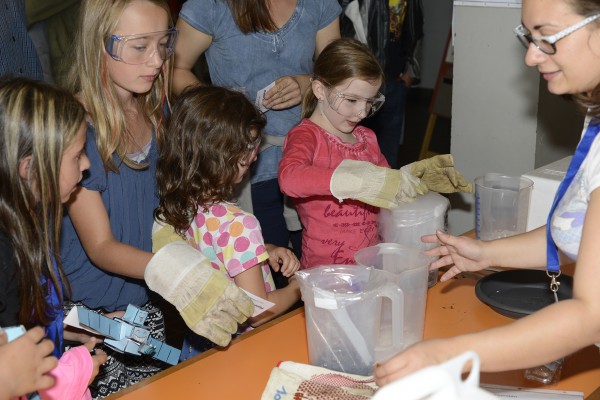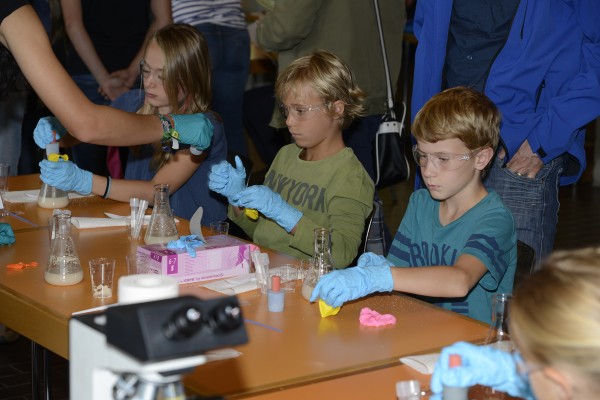Open hunt for habitable planets
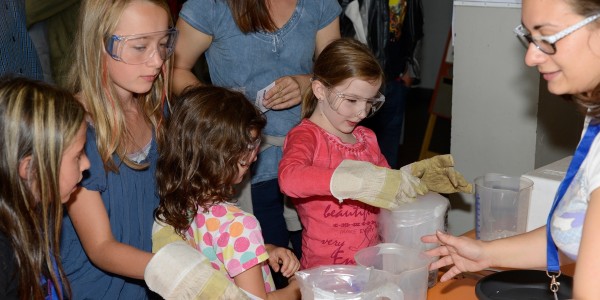
Bacterium, virus, fungus: Which one of these three things is not considered to be a living organism? The quiz question was quite a challenge for some parents who tried to help their children to win one of the nice space toys, meteorites and other prizes at the event “Jagd nach lebensfreundlichen Planeten” that took place on 5 September 2015 at the University of Bern. “I know it”, a ten year old boy, just running back from the other side of the hall, excitedly told his mother: “It’s the virus!” “He is right”, Sylviane Blum, responsible for the outreach activities of the Center of Space and Habitability (CSH) and organiser of the event, confirmed: “Viruses need host cells to replicate, they can’t survive by themselves whereas bacteria and fungi can breed without help.”
The quiz, that was turned in nearly 160 times, was just one of many activities that attracted about three to four hundred visitors of all ages. Shortly after opening at 4 pm, a big table in the lobby of the building “Exakte Wissenschaften” was packed with children and adults who tinkered paper models of the Rosetta spacecraft and the CHEOPS space telescope. Just next to it half a dozen of very young researchers put on rubber gloves and safety glasses to experiment with balloons, lime water and yeast. They learned that these microorganisms emit CO2 as we do and that looking for specific gases in atmospheres of distant planets is a promising method in the search for signs of extra-terrestrial life.
What is life?
Can there be life beyond our planet? This was the key question of the public event organised by the CSH together with the NCCR PlanetS in the frame of “Forschung live”, an initiative of the Academy of Sciences Switzerland (SCNAT) that celebrates its 200th anniversary in 2015. “We are searching for habitable planets”, said science philosopher Claus Beisbart in one of the eight short talks that were given by the experts of the University of Bern: “But what are we looking for? What is life?” During the centuries, there were different answers to this question and today there is no generally accepted definition. “Could a living organism be defined as something that regenerates itself in order to keep existing?” asked 13-year-old Vasco. A possible characterisation according to Claus Beisbart: “But then viruses would be considered as living organisms.” The discussion between the professor and the boy who wants to become a robot engineer went on to an even more fundamental topic: “Is space defined as something where matter can exist,” Vasco wanted to know. Then the question would be whether completely empty space can exist.
More down to earth was the topic that Klaus Mezger, Professor of Geology, addressed in his talk: What does it need to make a planet habitable? There must be liquid water. Whereas on Venus it is too hot, on Earth without an atmosphere the mean temperature would be minus 20 degrees instead of the existing plus 14 degrees. “Because of our atmosphere, even in Switzerland water is liquid during almost the whole year”, Klaus Mezger said.
Spicy comets
Measurements of the University of Bern showed that the water on Earth wasn’t delivered by comets such as Tschurjumow-Gerasimenko but rather by asteroids. Nevertheless, comets could have promoted the evolution of life. “On comets there is no life, but there are all the ingredients that are needed”, summarized Kathrin Altwegg, principal investigator of ROSINA aboard the ROSETTA spacecraft. Making your own mini-comet was one of the highlights of the event. With water, soil, some drops of soy sauce and dry ice the visitors created astonishing objects.
At the end of the evening, many visitors knew how to differentiate meteorites from stones and camel dung. They were also able to set up correctly the disks of their self-made star map, to orient themselves at a starry sky. Now, do we actually have any chance to find out, if there are some habitable planets revolving around any of those stars? “The space telescope CHEOPS will hopefully bring us one step closer to the answer,” said engineer Christopher Broeg. The project leader of the CHEOPS mission explained to technology interested visitors, how the hi-tech instrument is presently assembled and tested under space condition in a brand new lab. It will already be launched and begin to measure the diameter of planets around distant stars at the end of 2017. (bva/SB)
Photographer Bruno Bleiker documents a variety of activities at the event “Jagd nach lebensfreundlichen Planeten”:
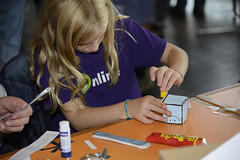
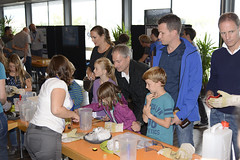
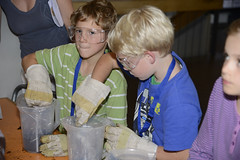
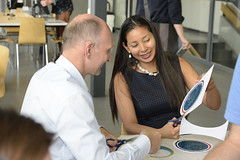
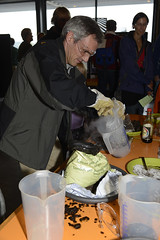
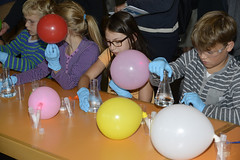
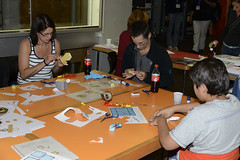

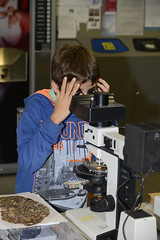
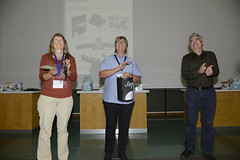

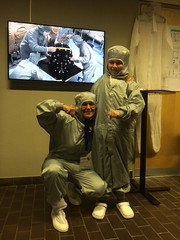
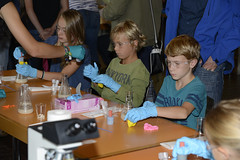
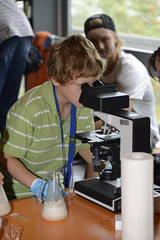
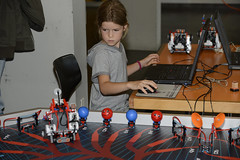
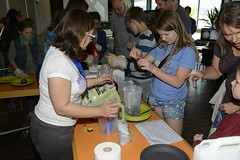

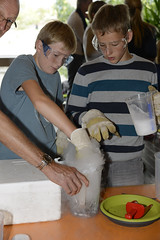

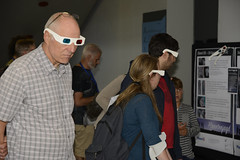
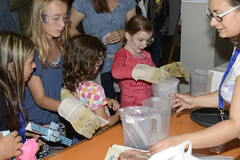
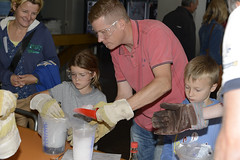
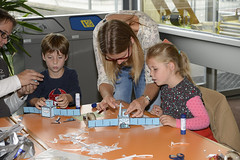
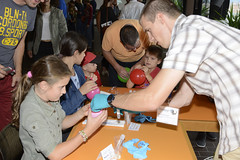
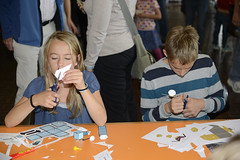
Categories: Internal Newsletter, News

